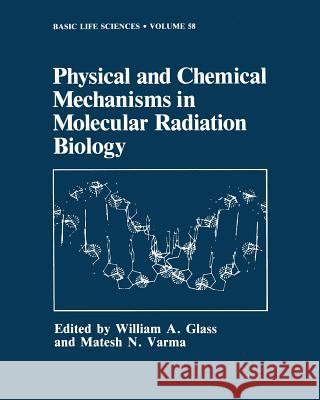Physical and Chemical Mechanisms in Molecular Radiation Biology » książka
Physical and Chemical Mechanisms in Molecular Radiation Biology
ISBN-13: 9781468476293 / Angielski / Miękka / 2012 / 528 str.
The fundamental understanding of the production of biological effects by ionizing radiation may well be one of the most important scientific objectives of mankind; such understanding could lead to the effective and safe utilization of the nuclear energy option. In addition, this knowledge will be of immense value in such diverse fields as radiation therapy and diagnosis and in the space program. To achieve the above stated objective, the U. S. Department of Energy (DOE) and its predecessors embarked upon a fundamental interdisciplinary research program some 35 years ago. A critical component of this program is the Radiological and Chemical Physics Program (RCPP). When the RCPP was established, there was very little basic knowledge in the fields of physics, chemistry, and biology that could be directly applied to understanding the effects of radiation on biological systems. Progress of the RCPP program in its first 15 years was documented in the proceedings of a conference held at Airlie, Virginia, in 1972. At this conference, it was clear that considerable progr: ess had been made in research on the physical and chemical processes in well-characterized systems that could be used to understand biological effects. During this period of time, most physical knowledge was obtained for the gas phase because the technology and instru- mentation had not progressed to the point that measurements could be made in liquids more characteristic of biological materials.











